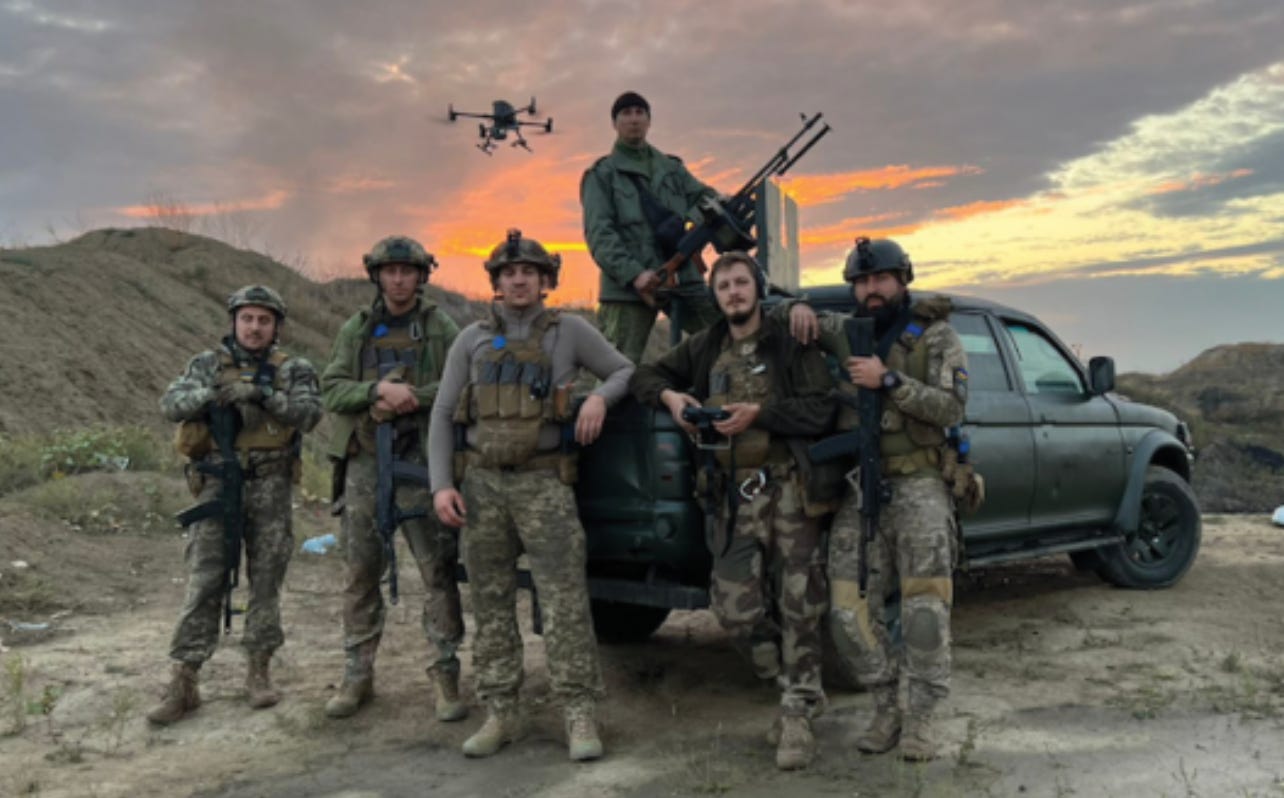If you are one of those people who whenever someone mentions how large the People’s Liberation Army Navy (PLAN) is and how their shipyard capacity greatly outstrips anything we have - is to simply respond, “Yes, but they don’t have the quality we have. Their systems are not as sophisticated.” - take a bit of a seat and ponder…
That may be true in some specific areas, but writ large? Are there hits that our luxury of qualitative edge is thinning?
That risk that was brought to the surface while listening to Silverado’s Geopolitics Decanted. On their July 24th episode, Dmitri Alperovitch talked with Andrey Lisovich, President of Ukraine Defense Fund, a charity that provides non-lethal aid to the Ukrainian military.
If you don’t have time to listen to the whole thing, go to the 20 minute mark.
They are specifically talking about the preference for Chinese vs American drones on the front by those fighting.
Lisovich’s quote should stick in your craw;
These (DJI Mavic) are Chinese made drones, and the best US made drones in the same category is worse on every single spec and costs five to seven times more. … the US analogs are substantially inferior … and they (the US) are not making near as many as DJI does.
If the PRC is that far ahead of the US in this area - doing it better and cheaper in addition to a higher volume - what if their military is getting similar modern systems?
Maybe the answer is “zero” - but are you willing to bet your fleet on that comfortable assumption?
The whole podcast is great to get a view on some of the smaller “unsexy but important” supporting equipment that is making the difference for Ukraine’s ability to counter Russia’s mass.
From the podcast, they outline four high priority assets needed to enable and enhance weapons systems that are being purchased by the soldiers themselves or various NGO’s like Liscovich’s.
All-wheel drive diesel pickup trucks. Nothing fancy. Any F-series will do for logistics and personnel transport.
Portable energy, i.e. generators.
Comms Equipment. #1 is Starlink; #2 Motorola commercial radios; #3 Portable cell towers.
Intelligence, counter-intelligence, and electronic warfare.
Another interesting point: the old Soviet doctrine requires 50,000 shells per a 8-kilometer front. That is hard math considering Western production capacity and stockpiles - and explains the need for precision and taking the cluster munitions out of the bunker.
Anyway, it’s Monday and I don’t have time to do a transcript. Give it a listen. Lots of good … and important things to consider.





Back in the late 1970s/early 80s, China made a conscious national decision to become a great industrial power. So they educated a couple hundred million people in science and technical skills. And built a continent-scale complex of mines, mills, refineries, factories, ports, and much more. And here we are today, witness to the result.
While at the same time, about 40 yrs ago, the US and West embarked on a cultural-scale program of financialization, deindustrialization and globalization. And while the West still has many and varied legacy industrial capacities, the comparative trajectories are apparent.
Meanwhile, military power is the first derivative of economic and basic industrial power. This used to be taught in American schools, certainly in war colleges. But anymore? I’m not so sure.
Our arrogance lies in the fact that no one has seriously challenged us since the Cold War (and likewise, combat operationally, we haven't had our knuckles seriously rapped since WW2). We have fallen into the same dilemma as the Royal Navy on the eve of the First World War. The British had rested on the laurels of Trafalgar, as much as we have rested on ours. We believe in our superiority, while nervously watching a rising naval power gain competency and numbers that could overwhelm us. And yet, we waste time, money, and resources on things that do not equate into effective warfighting. These are the signs of a complacent power who will be unprepared for the ferocity and rapacious appetite of a global conflict. Is the Navy learning from the lessons learned in this current conflict between Russia and Ukraine? Are we squandering all the practical and hard-earned wisdom that we ourselves garnered over generations? The Navy needs to start looking at the inevitable world war that is staring us all in the face, and developing programs that will bear fruit in the next three to five years (if not sooner).